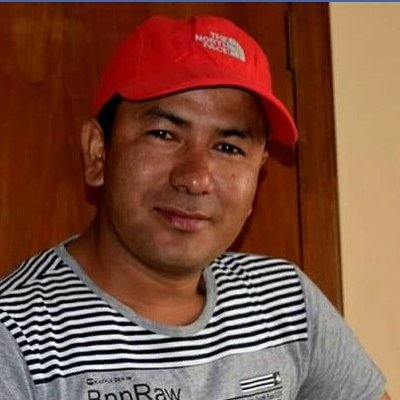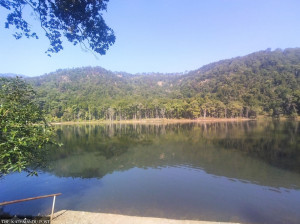Sudurpaschim Province
Survivors of last month’s Bajhang earthquake are still living in tents
Around 35 homes in Kuchgaun of Thalara in the district were destroyed in a magnitude 6.3 earthquake on October 3. The displaced say the government has provided no help.
Basant Pratap Singh
Hansa Nepali, a 70-year-old woman from Kuchgaun in ward 3 of Thalara Rural Municipality, lost her house over a month ago on October 3 when an earthquake of 6.4 magnitude, with its epicentre near Chainpur, the district headquarters of Bajhang, rocked Bajhang and the neighbouring districts.
Around 35 houses were completely destroyed in the Kuchgaun.
An asthma patient, Nepali has since been living in a tarpaulin tent with her daughter-in-law and two grandchildren. While some families managed to rebuild their homes, 12 poor families still live in tents pitched in the fields.
“The days are getting colder and my health worse. Our family is yet to receive any sort of financial help from the government to reconstruct the house,” said Nepali. “Our tent has started to leak but we have nowhere else to sleep. The prime minister visited the earthquake displaced on the fourth day of the disaster and promised funds to help us build temporary shelters.”
Prime Minister Pushpa Kamal Dahal, who reached Bajhang on October 6, announced Rs50,000 per family for those whose homes were destroyed, for the construction of temporary shelters; and Rs25,000 for those whose houses were damaged but not destroyed. Dahal announced a 14-point package for relief, rehabilitation and reconstruction. He also committed an additional Rs15,000 to Rs20,000, depending on the number of family members affected, as relief.
Dahal said the government would assess the damage and then collect data on the number of buildings requiring maintenance, retrofitting or reconstruction.
“We are still waiting for funds to rebuild our house,” said Nepali. “Until then, we have no choice but to suffer in the cold.”
Dhirja Devi Kami, another earthquake displaced in Kuchgaun, says she has long stopped believing in promises made by politicians during disasters. “The government has done nothing for us. They have not provided us with food, medicine or even shelter. We are completely dependent on a non-governmental organisation called Nagarik Aawaj for our daily meals,” said Kami. “Gradually, all of us living in tents are falling sick.”
According to the National Earthquake Monitoring and Research Centre, after the M6.3 earthquake of October 3, more than 650 aftershocks were recorded in Bajhang, including five with magnitudes between 4 and 5 and three between 5 and 6.
According to the District Administration Office, Bajhang, some 12,053 houses were damaged in the earthquake in the district. Among them, 2,445 were completely destroyed. Also, 6,084 houses were partially damaged and rendered uninhabitable.
In the earthquake, 123 government buildings, including schools and health posts, were completely damaged, and 152 partially. Around 50 structures, including temples and community centres, were also destroyed.
According to the District Disaster Management Committee (DDMC), Thalara Rural Municipality, Masta Rural Municipality, Chhabispathibhara Rural Municipality, Durgathali Rural Municipality, Khaptadchhanna Rural Municipality, Kedarsyu Rural Municipality, Jayaprithvi Municipality, and Baglung Municipality were hit by the earthquake.
Thalara Rural Municipality was the most affected local unit in the district, where 1,072 houses were damaged. In Thalara’s ward 9 alone, around 600 houses were damaged, and 400 houses were destroyed, according to local representatives.
According to Lokendra Bista, chairman of Thalara ward 9, more than 200 families are still living in tarpaulin tents.
“Among the victims, some are taking shelter at their relatives’ and neighbours’ houses, and some comparably richer people have already built houses, but poor people are still living in tents,” said Bista. “The risk of the elderly and the young falling ill due to the cold weather is increasing by the day.”
According to Gaurishankar Joshi, auxiliary health worker of Parakatne Health Post located in Thalara Rural Municipality, among the victims, most of the elderly and children are suffering from diarrhoea, cold, asthma, back pain, pneumonia, and typhoid.
“Along with other health problems, several victims are also suffering from mental health issues, which has raised a major concern in the rural municipality. “Every day we see five to ten patients coming to the health post. They talk about the stress they have to live with due to their poor and unsafe living conditions,” said Joshi. “Being a mountainous region, the district's weather is always cold and winters are harsh.”
Chief District Officer Narayan Pandey, also the chairman of the DDMC, said that funds to reconstruct and build houses have not been provided to the victims due to errors in the data provided by the local units.
“While verifying the victims, several errors were seen in the documents provided by the local units. Several names of people who were not actual earthquake victims were included in the list. A technical team of the National Disaster Risk Reduction and Management Authority will be sent to the earthquake-affected areas to collect the details and verify,” said Pandey. “Funds will only be provided after the NDRRMA team submits its report. We have no idea when the NDRRMA will send the team, but we request them to do it as soon as possible,” Pandey added.




 11.12°C Kathmandu
11.12°C Kathmandu












